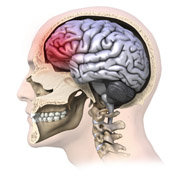Research and Innovation, UNL Office of

Center for Brain, Biology, and Behavior: Faculty Publications
Sleep Assessments In Healthy School-Aged Children Using Actigraphy: Concordance with Polysomnography
Document Type
Article
Date of this Version
3-2011
Citation
Published in final edited form as: J Sleep Res. 2011 March ; 20(1 Pt 2): 223–232. doi:10.1111/j.1365-2869.2010.00857.x. PMCID: PMC3040287
Abstract
Actigraphic recordings (ACT) are widely used in school children as a less intrusive and more extended approach to evaluation of sleep problems. However, critical assessment of the validity and reliability of ACT against overnight polysomnography (NPSG) are unavailable. Thus, we explored the degree of concordance between NPSG and ACT in school-aged children to delineate potential ACT boundaries when interpreting pediatric sleep. Non-dominant wrist ACT was simultaneously recorded with NPSG in 149 healthy school-aged children (4.1 to 8.8 years old, 41.7% boys and 80.4% Caucasian) recruited from the community. Analyses were limited to the Actiware (MiniMitter-64) calculated parameters originating from 1-min epoch sampling and medium sensitivity threshold value of 40; i.e., Sleep Period Time (SPT), Total Sleep Time (TST) and Wake After Sleep Onset (WASO). SPT was not significantly different between ACT and NPSG. However, ACT significantly underestimated TST by 32.2±33.4 minutes, and overestimated WASO by 26.3±34.4 minutes. The decreased precision of ACT was also evident from moderate to small concordance correlation coefficients (0.47 for TST and 0.09 for WASO). ACT in school-aged children provides reliable assessment of sleep quantity, but is relatively inaccurate during determination of sleep quality. Thus, caution is advocated in drawing definitive conclusions from ACT during evaluation of the sleep disturbed child.
Included in
Behavior and Behavior Mechanisms Commons, Nervous System Commons, Other Analytical, Diagnostic and Therapeutic Techniques and Equipment Commons, Other Neuroscience and Neurobiology Commons, Other Psychiatry and Psychology Commons, Rehabilitation and Therapy Commons, Sports Sciences Commons


Comments
Copyright 2011 John Wiley. NIH Public Access